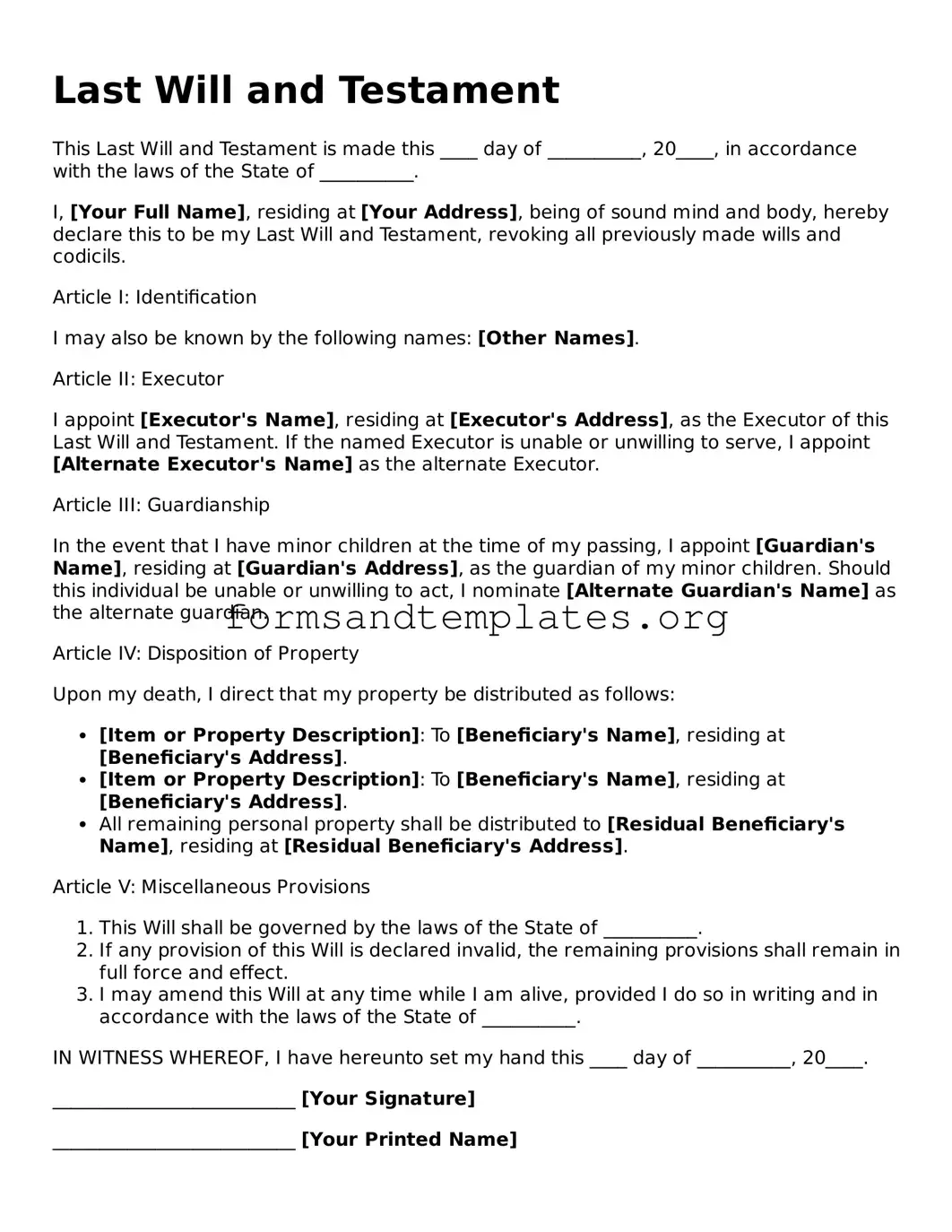Last Will and Testament
This Last Will and Testament is made this ____ day of __________, 20____, in accordance with the laws of the State of __________.
I, [Your Full Name], residing at [Your Address], being of sound mind and body, hereby declare this to be my Last Will and Testament, revoking all previously made wills and codicils.
Article I: Identification
I may also be known by the following names: [Other Names].
Article II: Executor
I appoint [Executor's Name], residing at [Executor's Address], as the Executor of this Last Will and Testament. If the named Executor is unable or unwilling to serve, I appoint [Alternate Executor's Name] as the alternate Executor.
Article III: Guardianship
In the event that I have minor children at the time of my passing, I appoint [Guardian's Name], residing at [Guardian's Address], as the guardian of my minor children. Should this individual be unable or unwilling to act, I nominate [Alternate Guardian's Name] as the alternate guardian.
Article IV: Disposition of Property
Upon my death, I direct that my property be distributed as follows:
- [Item or Property Description]: To [Beneficiary's Name], residing at [Beneficiary's Address].
- [Item or Property Description]: To [Beneficiary's Name], residing at [Beneficiary's Address].
- All remaining personal property shall be distributed to [Residual Beneficiary's Name], residing at [Residual Beneficiary's Address].
Article V: Miscellaneous Provisions
- This Will shall be governed by the laws of the State of __________.
- If any provision of this Will is declared invalid, the remaining provisions shall remain in full force and effect.
- I may amend this Will at any time while I am alive, provided I do so in writing and in accordance with the laws of the State of __________.
IN WITNESS WHEREOF, I have hereunto set my hand this ____ day of __________, 20____.
__________________________ [Your Signature]
__________________________ [Your Printed Name]
Witnesses:
We, the undersigned witnesses, do hereby attest that the individual named above signed this Last Will and Testament in our presence, and was of sound mind and under no duress at the time of signing.
__________________________ [Witness 1 Signature]
__________________________ [Witness 1 Printed Name]
Address: [Witness 1 Address]
__________________________ [Witness 2 Signature]
__________________________ [Witness 2 Printed Name]
Address: [Witness 2 Address]
